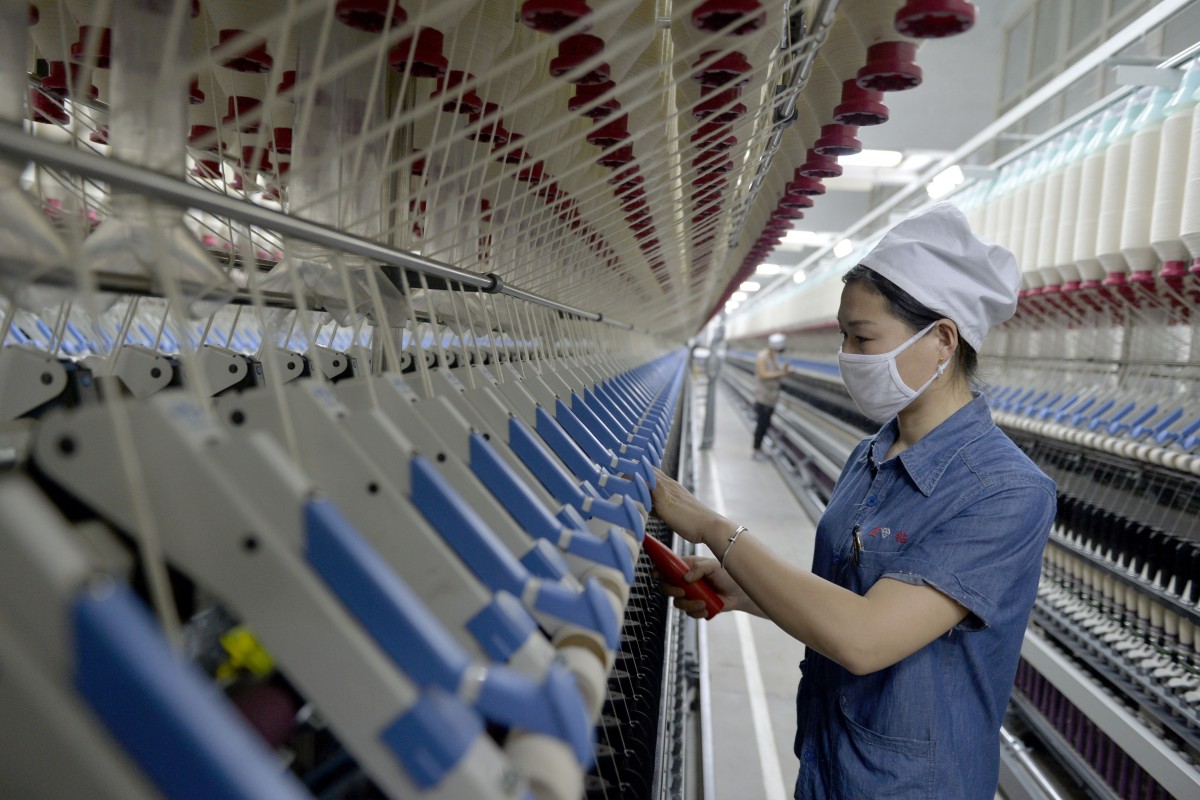China-based manufacturers have welcomed the news of a truce in the year-long trade war between Washington and Beijing, with a freeze on further tariffs.
President Xi Jinping and his US counterpart Donald Trump confirmed the deal – reported earlier in the week – on the sidelines of the Group of 20 summit in Osaka on Saturday. The US will put on hold new duties on US$300 billion of Chinese goods, and the world’s two biggest economies will restart trade talks.
Trump also offered to ease restrictions on Chinese telecoms firm Huawei Technologies. In return, Beijing agreed to buy more US products to reduce the trade deficit.
But manufacturers were still concerned for their business prospects, given the volatility of the situation, uncertainty over how solid the truce was, and the fact that a 25 per cent tariff remained on US$250 billion of Chinese goods.
“It gives me hope that we can deliver these products without having to re-source,” said Timothy Stuart, director of Unit Bricks, a toymaker that exports 80 per cent of its products to the US.
The moratorium on tariffs means Stuart can continue to use his existing supply chain.
“Effectively, it keeps my business alive and keeps children educated,” he said.
Unit Bricks predominantly uses two major factories in Fujian and Shandong provinces to make its products. There are no US tariffs on the company’s exports at the moment, but had the next round of tariffs on an additional US$300 billion of Chinese imports been deployed, the company’s products would be subject to a levy of up to 25 per cent.
“We looked at potentially moving production back onshore to the United States, but that is not cost-effective. China is our best option, we prefer to stay there. If it comes to plan B, we might be forced to move production, but I don’t know where,” Stuart said.
Although there was no ideal destination for relocation, if the new round of tariffs were implemented, the company would “move, 100 per cent, for sure”, Stuart said.
Hu Chao, assistant general manager at manufacturer Yongkang Sunyee Industrial, also welcomed the truce, saying it would “boost confidence”. The Zhejiang-based company produces all-terrain vehicles and motorcycles. Exports of those vehicles to the US have been subject to a 25 per cent tariff since July last year. Sunyee had just completed all the paperwork to export to the US when the trade war started.
“We just managed to enter the US market, which has huge potential for us. We had projected orders from the US of about US$2 million a year, but [the buyers] cancelled the orders when the trade war broke out,” Hu said.
Trump and Xi’s meeting in Osaka put the finishing touches to a deal which had been in the works for almost a fortnight, after a dramatic break-off in talks in early May. On Monday, US Trade Representative Robert Lighthizer, US Treasury Secretary Steven Mnuchin and Chinese Vice-Premier Liu He, Beijing’s chief negotiator, discussed the broad outline of the Trump-Xi trade agenda by phone.
On Friday, other G20 leaders had urged the world’s two largest economies to settle their differences because the trade war posed a risk to the global economy and risked dragging other nations in, too.
Although he welcomed the truce, Hu still had concerns about the future.
“The trade war has had a domino effect, as it has an impact on the global economy. We were looking for other markets after we lost the US market, but so were our competitors. This fierce competition was sparked by the trade war,” Hu said.
Not all exporters were convinced that the truce would have any effect, including Larry Szeto, general manager of NSK Paper.
“We are still worried because there is too much uncertainty. Many customers have already moved production to other countries such as Mexico and Indonesia. So even if the [new US] tariffs do not go through, a lot of damage has already been done,” Szeto said.
The tit-for-tat trade war has accelerated the trend of manufacturers leaving China for cheaper production hubs in Southeast Asia, such as Vietnam, where land and labour costs less. The fact that Vietnam has lower-tariff access to the US is also a huge draw and helped the Vietnamese economy grow by 6.8 per cent in the second quarter, with a dramatic increase in exports to the US.
On Wednesday, the city government of Shenzhen, China’s hi-tech hub, released a report warning about the growing risk of a manufacturing exodus. The report said that in 2018, 91 manufacturers with revenue of over 20 million yuan (US$2.9 million) had left Shenzhen. Their cumulative industrial output was worth 60 billion yuan to the Shenzhen economy.
“The relocation of leading manufacturers has caused their suppliers to relocate too, which has threatened the integrity of the supply chain to the Shenzhen economy,” the report said.
Leo Zhu, a lawyer focused on international trade and intellectual property protection at Zhejiang Chession Law Firm, said the suspension of tariffs on an extra US$300 billion of Chinese goods “would have little benefit to the world economy as this kind of instability is harming” the global outlook.
“The US market has been very attractive to many Chinese entrepreneurs. Now, with Mr Trump changing policies all the time, people are getting more and more concerned about dealing with US businesses. Then, very naturally, people may turn their business attention to the countries [participating] in the Belt and Road [Initiative] or other emerging markets,” Zhu said.
Published On : 30-06-2019
Source : South China Morning Post

